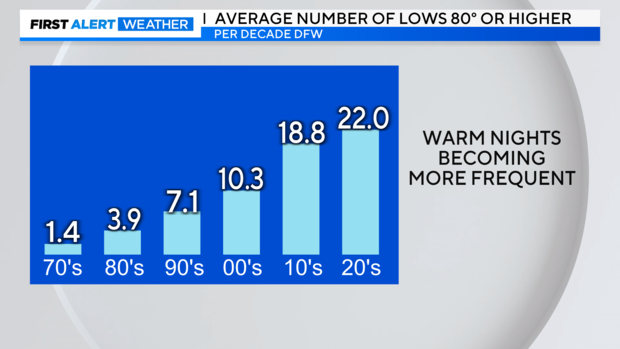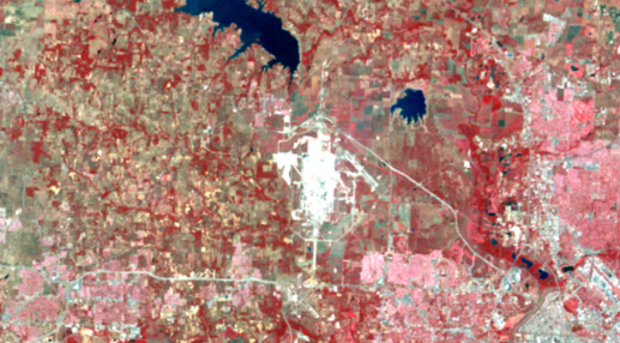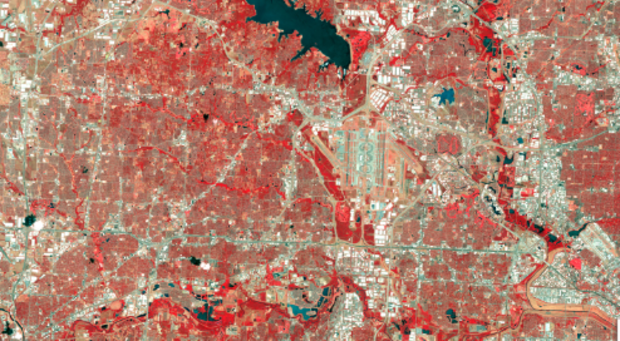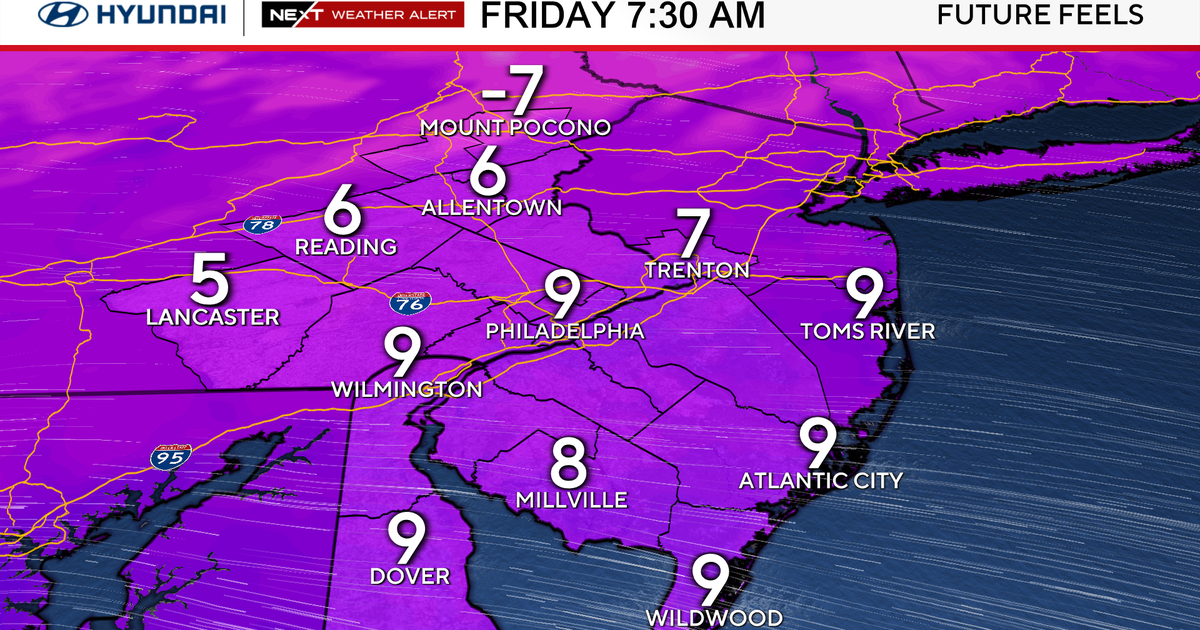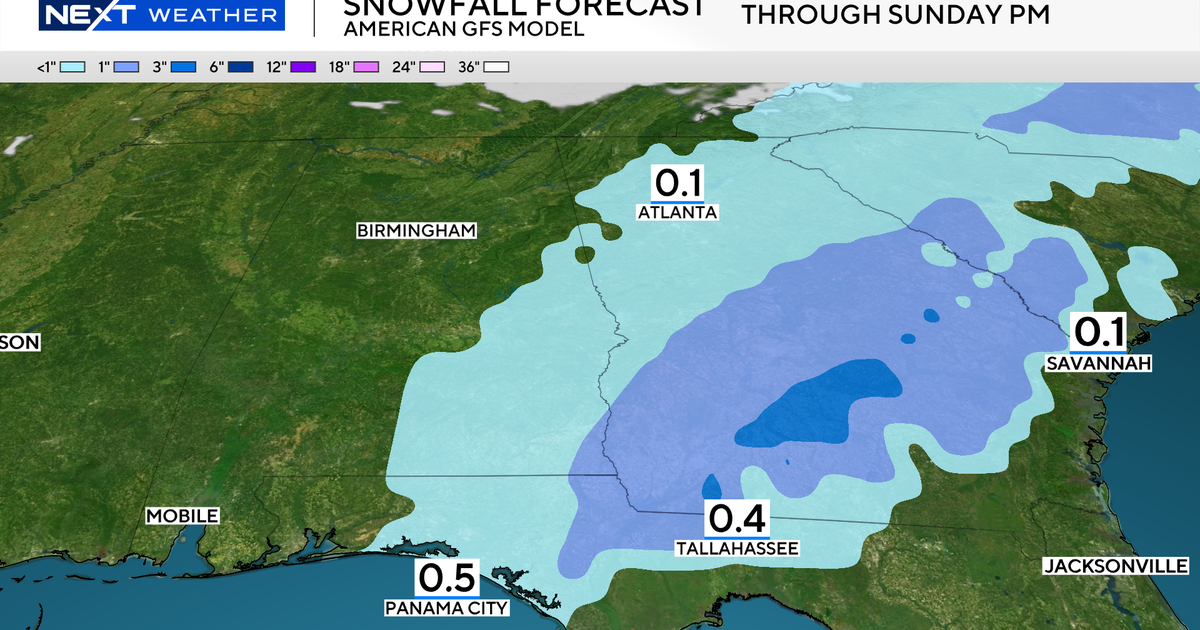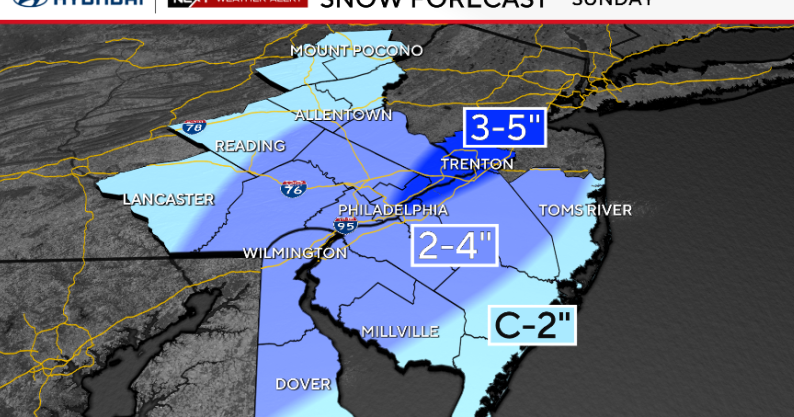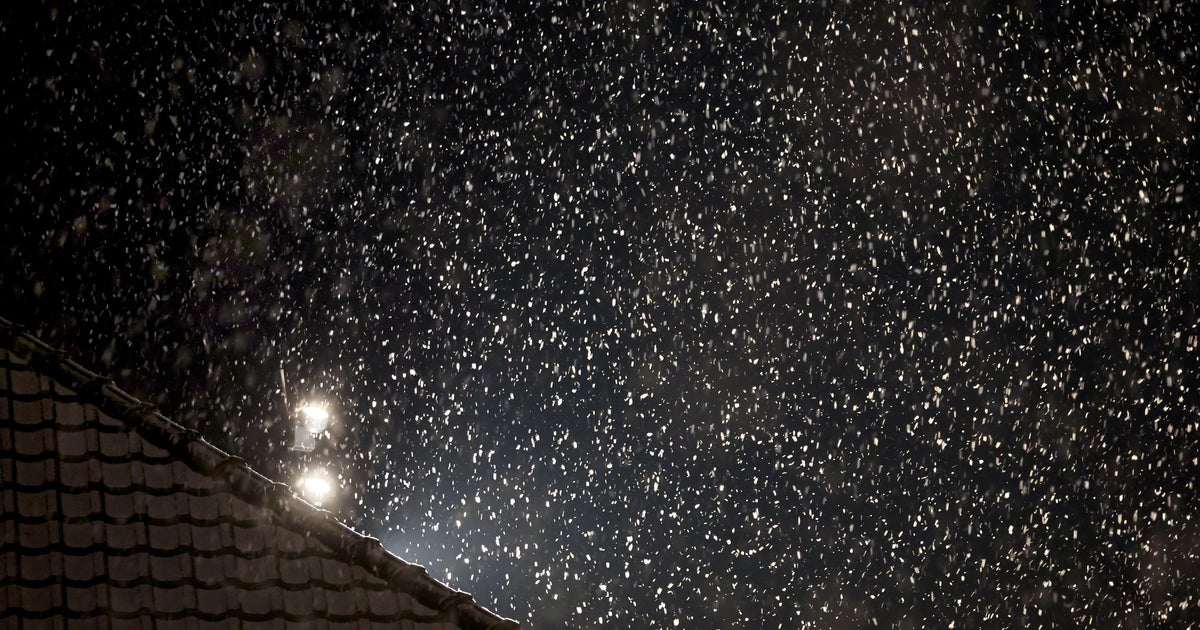Not your imagination... Nights are getting warmer in DFW
NORTH TEXAS (CBSNewsTexas.com) - So far this August we are breaking lots of records. Not daytime highs. Nighttime lows.
We are predicting that on Monday morning the DFW Airport will have surpassed the previous record of 358 hours staying above 80°.
As of Saturday, half of the mornings broke a record for their date for the warmest morning ever recorded.
The current streak of warm nights is extremely unusual. Just look at the number of nights where the low stayed at 84° or higher. We've had as many of those in the last 10 days as in the last century.
A low of only 85°F is extremely rare, in the entire 124-year weather history of DFW, it has happened only 21 times. Seven of those, a third of them, have happened in the first two weeks of August.
Warmer nights are becoming much more frequent at DFW. As of Saturday, DFW has logged a total 33 nights where lows stayed at 80 degrees. This puts the current count fourth on the list of most in a year. Take note that the six on the last all occurred since 1998. Second on the list? Last year.
Are the nights getting warmer at DFW? Yes, they are. The average low in the summers of the 70s was 72.2°F. In the last full decade, from 2010-2019, the average summer low was 76.0°F.
I totaled up the number for each decade of warm nights (80°F or above) since 1970. In the summers of the 70s, nights that were warm were very rare. Summers in the 70s (1970-1979) averaged less than two. That number doubled the next decade to almost four, then almost doubled again the next decade (the 90s) to over seven.
The real change started in 2010-2019. In that decade the number of warm nights (80° or above) rose to almost 19 per summer. In the first three years of this decade (2020 – 2023), DFW has averaged even more, an estimated 22 per summer (as of this writing- we still have most of August to get through yet).
Overall temperatures at DFW are rising as well. But the rise in nighttime temperatures is higher than the rise of daytime highs. The main culprit is the Urban Heat Island effect. Concrete, asphalt and roofs absorb more daytime heating than pasture and forests. That heat is radiated back into the atmosphere at night. Also, add in the heat given off from engines and A/C units as the number of vehicles and buildings has also increased in the area.
This effect has increased significantly in the Metroplex. In 1972 the entire DFW area had a population of 2.1 million people. As of 2022, the population is three times that number at 6.5 million.
The area around the airport is no exception. Here are two Landsat images to compare. They show the area around the DFW airport in 1972 verse 2022. They are difficult to read but look carefully at the tiny squares around the airport in the early picture. These are pastures. They have disappeared into urban development by 2022. In other words, the area around the airport has been filled in with concrete and roofs.
1972
2022
The atmospheric temperature at the surface is increasing around the globe as well as ocean temperatures. The Urban Heat Island effect is also increasing as the population continues to grow in urban areas like DFW. Nights where the temperature stays above 80°F will likely continue to increase as well.
Nights like this could greatly affect your landscaping.
Native plants are not used to nights this warm. Plants can seal themselves off on hot days and try to keep from losing moisture in their leaves and stems. They can't do that at night, the process requires photosynthesis. You might have noticed this in your own yard. You are watering, mulching and perhaps even shading your plants in this heat wave. And they still look like they are suffering. But the heat stress might not just be from the hot days. It could also be from the warm nights.
If warm nights are the new normal, considering different plants might be your best option. It'll be difficult to water yourself out of this problem. You would have to water every morning and that would drive the roots up closer to the surface. They require deep roots to survive the heat so it would be counterproductive. I have noticed this summer that the plants that are native to West Texas are more successful right now (my Four-Nerve daisy for example).
Studies are currently underway that measure and better understand the Urban heat island effect here in the DFW area. Mitigation ideas include increasing tree canopy and using reflective roofs and asphalt to push more of the daytime heating back into space. These ideas have already been tried in other areas in the United States and have been shown to be effective. Better building techniques can also help; homes and businesses that are more energy efficient will decrease electricity use. Using less electricity means burning less fossil fuel which means fewer greenhouse gases are released into the atmosphere.
In my weekly series Gardening 101, I continue to recommend native and adapted plants that can handle the summer heat without copious amounts of water. This summer might be the start of a smaller list of plants, one that can also survive the warm nights. The right plants really matter. This saves you money, but it also increases the green spaces across the summer season.
We all need to pitch in. Grow some shade for your yard. More green space helps lower the Urban heat. Get involved with your local city to increase the tree canopy in your town. Warmer nights are the new normal in the Metroplex. Perhaps the new normal will be doing something about it.
Jeff Ray is the senior First Alert Meteorologist at CBS News Texas and an avid gardener. When not covering the weather, he is finding stories about Gardening in north Texas. If you would like Jeff to come talk to your group about how changing weather patterns are changing the way we garden in this area, please email him at jaray@viacomcbs.com .
*This story was updated on Aug. 12 to show the new records broken and to include the need for possible future changes in plant selection.



